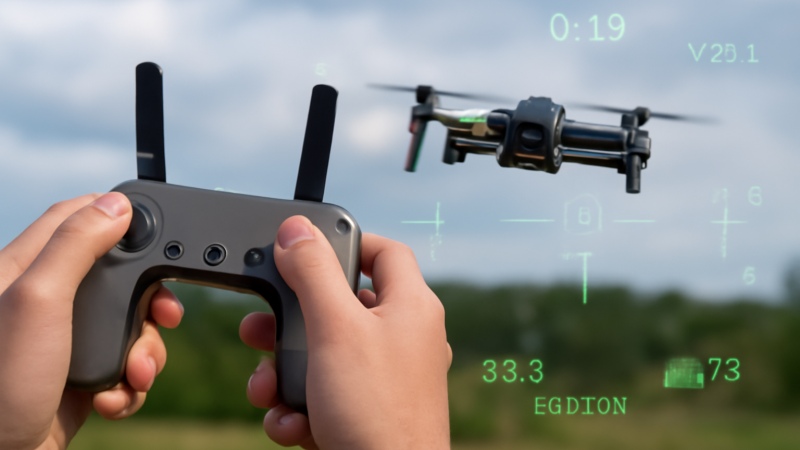Edge Computing and TinyML: Revolutionizing Real-Time Analytics in 2025

Why TinyML and Edge Computing Are Critical in 2025
The convergence of Tiny Machine Learning (TinyML) and edge computing represents a paradigm shift from cloud-dependent AI to autonomous, real-time intelligence. By 2025, billions of IoT endpoints will run lightweight ML models directly at the edge, enabling millisecond inference times on microcontrollers consuming only microwatts of power.
This technology stack delivers three fundamental advantages:
Ultra-low latency: Real-time decision-making without cloud dependencies
Enhanced privacy: Data processing occurs locally, reducing exposure risks
Energy efficiency: Battery-powered devices can operate for years on a single charge
Understanding TinyML: Intelligence in Miniature
TinyML refers to ultra-compact machine learning models designed for devices with severe memory constraints—typically under 1MB of storage and operating on milliwatt power budgets. These models achieve efficiency through advanced optimization techniques:
Quantization: Converting 32-bit floating-point models to 8-bit integers
Pruning: Removing redundant neural network connections
Knowledge distillation: Compressing larger models into lightweight versions
When combined with edge computing, TinyML enables autonomous inference directly on microcontrollers, eliminating the need for constant cloud connectivity.
Transformative Applications Across Industries
Manufacturing & Predictive Maintenance
Factories are embedding TinyML-powered sensors into machinery to detect acoustic anomalies and vibration patterns that predict equipment failures. Companies report up to 62% reduction in downtime through real-time, on-device analytics that trigger maintenance before catastrophic breakdowns occur.
Healthcare & Wearable Technology
Modern wearables now analyze biosignals directly on-device, monitoring heart rate variability, respiratory patterns, and even early disease indicators. This privacy-first approach keeps sensitive health data local while extending battery life significantly. TinyML enables continuous health monitoring in remote areas without internet connectivity.
Agriculture & Environmental Monitoring
Solar-powered soil sensors using TinyML achieve autonomous nutrient and moisture optimization, delivering yield improvements of up to 41% and water savings of 37%. Wildlife conservation projects deploy acoustic classification systems that identify species calls for biodiversity tracking—all processing data locally.
Smart Cities & Infrastructure
Urban environments leverage TinyML-powered sensors for real-time traffic management, adaptive lighting, and safety monitoring. Cities report energy savings exceeding 40% and dramatic congestion reduction through fully localized inference systems that don’t require constant cloud uploads.
Technology Drivers Accelerating Adoption
Advanced Hardware Integration
The latest microcontrollers feature built-in neural accelerators and specialized processing units. ST’s STM32N6 delivers 600 GOPS at 3-TOPS/W energy efficiency, while Analog Devices’ MAX78000 offers CNN acceleration with microwatt power consumption.
Mature Development Frameworks
Platform accessibility has dramatically improved through tools like:
TensorFlow Lite Micro: Optimized for resource-constrained devices
Edge Impulse: No-code platform for rapid TinyML deployment
CMSIS-NN: ARM’s optimized neural network kernels
5G and Enhanced Connectivity
While TinyML reduces cloud dependency, 5G networks enable seamless coordination between edge devices when needed, supporting hybrid architectures that balance local processing with selective cloud integration.
Overcoming Implementation Challenges
Technical Constraints
Memory limitations: Models must fit within kilobytes of storage
Processing power: Complex inference within strict energy budgets
Model accuracy: Balancing compression with performance requirements
Strategic Solutions
Start with simple use cases: Begin with anomaly detection before complex classification
Leverage established frameworks: Use proven tools to accelerate development
Design for updates: Plan over-the-air model deployment and integrity verification
Hybrid approaches: Combine edge inference with selective cloud processing
Emerging Trends and Future Directions
Federated Learning at the Edge
Federated TinyML enables distributed model improvement without centralizing data, allowing edge devices to collaboratively learn while preserving privacy. This approach is particularly valuable in healthcare and industrial applications.
Neuromorphic Computing
Companies like Innatera are developing neuromorphic microcontrollers using Spiking Neural Networks (SNNs) that achieve 100x speed improvements and 500x lower energy consumption compared to traditional digital processing.
Multi-modal Intelligence
Advanced edge devices now combine audio, visual, and sensor data for comprehensive environmental understanding, enabling more sophisticated autonomous responses.
Market Impact and Investment Trends
The global edge computing market is experiencing explosive growth, valued at $432.94 billion in 2024 and projected to reach $5.13 trillion by 2034, representing a 28% CAGR. This growth is driven by increasing demand for real-time analytics and privacy-preserving AI solutions.
Strategic Implementation Roadmap
Organizations should approach TinyML and edge computing adoption systematically:
Assess use cases: Identify applications requiring real-time responses and data privacy
Pilot projects: Start with simple anomaly detection or classification tasks
Infrastructure planning: Design for scalability and remote management
Skill development: Combine embedded systems expertise with ML knowledge
Security framework: Implement model integrity and device authentication
Conclusion: The Edge Intelligence Revolution
TinyML and edge computing represent more than technological advancement—they embody a fundamental shift toward distributed intelligence that prioritizes privacy, efficiency, and autonomy. For organizations developing IoT products, industrial systems, or consumer devices, this technology stack offers:
Reduced operational costs through lower bandwidth and cloud dependencies
Enhanced user trust via privacy-preserving local processing
Improved reliability through offline-capable intelligent systems
Competitive differentiation via real-time responsive products
As we progress through 2025, TinyML and edge computing will transition from emerging technologies to essential infrastructure for intelligent systems. Organizations that embrace this shift now will lead the next generation of autonomous, privacy-first AI applications.
The future of artificial intelligence isn’t just in the cloud—it’s distributed across billions of tiny, intelligent devices making real-time decisions exactly where they’re needed most.
Also Read: How Technology Is Changing How We Learn and Advance






